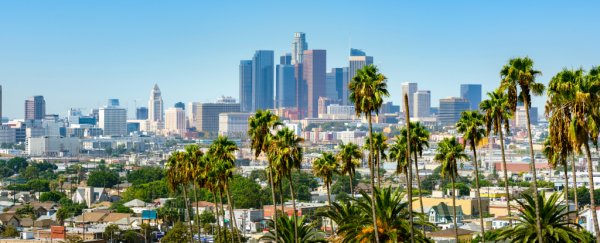For years, the state of California has been leading the nation in solar production, employing more than 86,000 workers in its local solar industry. And, as of last year, the state generated about 16 percent of its energy needs from solar power alone.
Now, the Golden State is about to go even greener.
On Wednesday, California became the first US state to require solar panels on all new homes. The landmark decision was made unanimously by the California Energy Commission, and will officially be implemented in 2020.
"The best way to see this code update is as a step, an important step that we defined over a decade ago, part of an overall suite of reforms to reduce greenhouse gases," Andrew McAllister, an Energy Commission member, told The New York Times.
From then on, the new policy is expected to cost home, condo and apartment builders somewhere between $8,000 and $12,000.
While the upfront cost is certainly expensive, the commission points out that homeowners will save about $80 a month on heating, cooling and lighting bills with the renewable technology.
When taking into account a 30-year mortgage, the Energy Commission predicts that the standards will add about $40 to an average monthly payment.
Plus, California is planning on changing its energy rate structure next year, which means that those with solar power will avoid higher costs.
"Any additional amount in the mortgage is more than offset," McAllister said.
"It's good for the customer; it's good for the homeowner."
The only way to get out of this policy, would be if a home did not have room for the solar panels or if the solar panels would be blocked by taller buildings or trees. Otherwise, there are no other exceptions.
The new rule is part of a state-wide initiative to get at least 50 percent of California's electricity needs through renewable energy by 2030.
"We've known this was coming," Bob Raymer, a senior engineer of the California Building Industry Association, told The New York Times.
"The writing was on the wall."
Right now, California is on the front lines of the green rebellion currently fighting against the Trump administration's fossil fuel-driven policies.
After President Trump announced a 30 percent tariff on imported solar panels, solar power companies in California were hit hard.
The California-based company SunPower, had to lay off about 3 percent of its workforce after the tariff fallout.
"We'll have to cut costs even more, we just don't have the money," the CEO of SunPower, Tom Werner, told The Hill in February.
"A cursory review of our balance sheet would see there is not sufficient money which would mean decreased American investment - we'd focus on foreign markets where we don't have to pay a tariff."
With 80,000 new homes being built every year in the state, the new requirement will increase the annual number of rooftop solar installations by 44 percent. As a result, California solar panel makers and installers will be receiving a massive boost in business.
"This is a very large market expansion for solar," said Lynn Jurich, co-founder of Sunrun, a leading solar installation company.
"It's very cost effective to do it this way, and customers want it."
New Jersey, Massachusetts and Washington DC have all reportedly explored similar ideas. With California leading the way, the road will be far less rocky for other states that see the potential in renewable energy.
Science AF is ScienceAlert's new editorial section where we explore society's most complex problems using science, sanity and humor.
